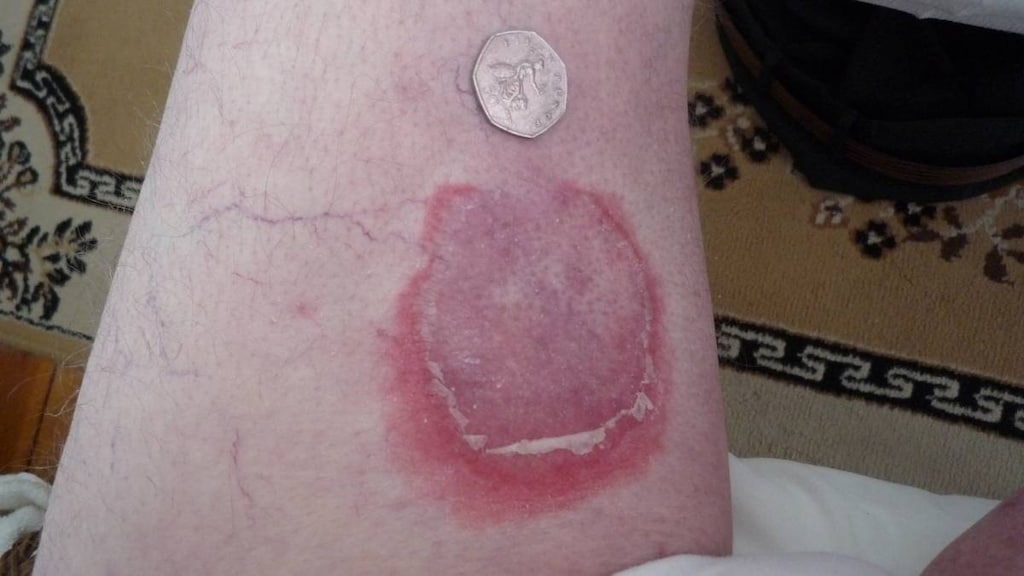
What is bullous pemphigoid?
Bullous pemphigoid is a rare skin condition that causes large, fluid-filled blisters.
The blisters occur just under the outermost layer of the skin (this is called the epidermis) and the condition most commonly occurs in people over the age of eighty.
What causes bullous pemphigoid?
Bullous pemphigoid is an autoimmune condition that occurs when your immune system produces antibodies to fibers that connect the outer layer of skin (epidermis) to the next layer (dermis). This causes inflammation, blistering, and itching.
Experts aren’t sure why this happens to some people and not others, although it can sometimes be triggered by certain medications.
What are the symptoms of bullous pemphigoid?
Symptoms of bullous pemphigoid may include:
- Skin that may feel itchy for weeks or months before the blisters appear
- Large, fluid-filled blisters, that don’t easily rupture when touched
- Blisters develop along the creases or folds in the skin, or on areas that often flex, such as the lower abdomen, upper thighs or armpits
- The skin around the blisters is reddish or darker than normal
- Eczema or a hive-like rash may also be present
- Some people develop small blisters or sores in the mouth or on other mucous membranes, such as the eyes
Although bullous pemphigoid usually appears randomly, it is more common in people who are older and may be triggered by:
- Ultraviolet light used to treat other skin conditions
- Medical conditions such as diabetes, lichen planus, multiple sclerosis, rheumatoid arthritis, or ulcerative colitis
- Medications such as etanercept, furosemide, penicillin, or sulfasalazine
- Radiation therapy to treat cancer
How is bullous pemphigoid diagnosed?
See your doctor if you develop unexplained blistering on your skin, your eyes or in your mouth.
Your doctor will ask you about your symptoms and may order blood tests and take a biopsy (a small sample of the affected skin). You may need to see a dermatologist (a skin specialist) or an ophthalmologist (an eye specialist), depending on your symptoms.
How is bullous pemphigoid treated?
Bullous pemphigoid often goes away on its own in a few months, but in some people, it may take up to five years to resolve. For older people in poor health it can be life-threatening. Treatment aims to help heal the blisters and relieve itching.
Treatments may include:
- Corticosteroid medications, such as prednisone
- Immunosuppressants, such as azathioprine, mycophenolate, or methotrexate
- Tending to wounds promptly
- Avoiding activities that aggravate blisters
- Avoiding sun exposure
- Keeping the diet soft and avoiding crunchy or spicy foods if there are blisters in the mouth
Article references
Image Attribution: Jim France [CC BY-SA 3.0 (https://creativecommons.org/licenses/by-sa/3.0)] - https://commons.wikimedia.org/wiki/File:Erythema_annulare_centrifugum.JPG




